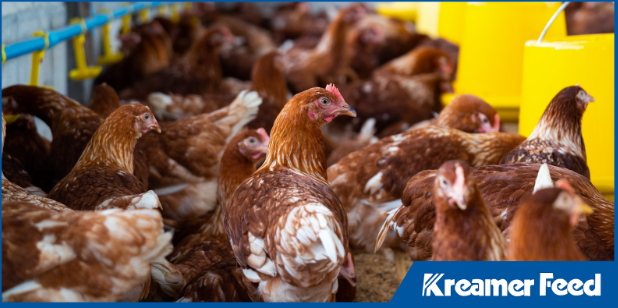
In agriculture, ensuring animal health and food quality isn’t just about good nutrition, it’s also about following the rules that protect both. Feed regulations are a vital part of the food production system, shaping how livestock feed is manufactured, labeled, and distributed.
Whether you’re managing a small farm or a commercial operation, understanding feed regulations helps maintain feed safety, prevent costly errors, and support responsible, compliant farming practices.
Why Feed Regulations Matter
Animal feed is more than just a daily input, it’s the first link in the food chain. What animals eat directly affects their health and the quality of the milk, meat, or eggs they produce. That’s why animal feed laws exist to ensure safety, consistency, and transparency across the industry.
Agencies like the Food and Drug Administration (FDA) and the Association of American Feed Control Officials (AAFCO) set regulatory standards that define what can go into feed, how it should be labeled, and how it must be tracked. These rules are designed to protect not only livestock, but also farmers and consumers.
Key Components of Feed Compliance
Here are some of the most important areas of agricultural compliance when it comes to animal feed:
1. Labeling Accuracy
All feed labels must clearly state the product name, intended animal species, guaranteed nutrient analysis, ingredient list, and directions for use. Accurate labeling ensures that animals receive appropriate nutrition and helps avoid misuse of feed products.
2. Approved Ingredients
Only ingredients that are recognized as safe and effective by regulatory bodies can be included in livestock feed. These must meet nutrient requirements and pass specific safety benchmarks, reducing the risk of contamination or nutritional imbalances.
3. Medicated Feed Protocols
If feed includes medication, additional rules apply. Farmers must follow dosage guidelines, withdrawal periods, and veterinarian oversight under regulations like the Veterinary Feed Directive (VFD). This helps prevent drug residues in food and reduces the risk of antimicrobial resistance.
4. Traceability and Recordkeeping
Producers, distributors, and even end-users must maintain detailed records of feed batches, ingredient sources, and usage. This supports accountability and enables quick response in the event of a feed recall or investigation.
Why Feed Safety is a Shared Responsibility
Feed safety doesn’t stop at the manufacturing plant. Farmers, feed retailers, and animal caretakers all play a role in keeping livestock healthy and food supplies safe. This means:
- Storing feed properly in sealed, labeled containers
- Following expiration dates and rotation practices
- Preventing cross-contamination between medicated and non-medicated feeds
- Keeping up with regulatory updates from trusted agencies
These practices not only protect animals, but also help maintain compliance with industry standards and reduce liability.
Feed Quality and Compliance Go Hand in Hand
Good feed isn’t just safe, it’s effective. Nutritionally complete feeds that meet regulatory requirements also support nutrient absorption, reduce waste, and promote better animal performance. When feed is produced and used in line with both science and the law, the result is better outcomes for both animals and farmers.
Quality control and compliance work together to build a system of trust between manufacturers, farmers, retailers, and the families who consume agricultural products.
Your Trusted Source for Safe, Compliant Feed
Understanding and following feed regulations is essential to ensuring feed safety, protecting animal health, and maintaining high levels of farm productivity. Compliance helps prevent disease, promotes transparency, and upholds the standards that consumers rely on every day.
At Kreamer Feed, we’ve been in business since 1947 with a strong commitment to producing safe, high-quality livestock and poultry feed that meets all regulatory standards. When you choose us, you’re choosing decades of experience, strict compliance, and a partner who takes feed safety as seriously as you do.